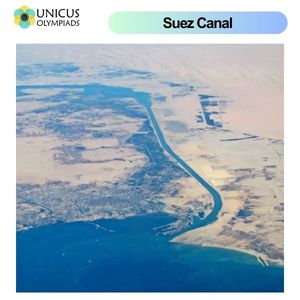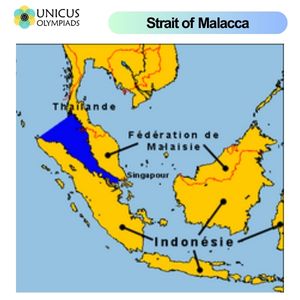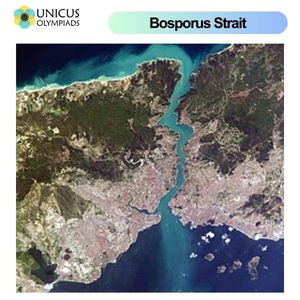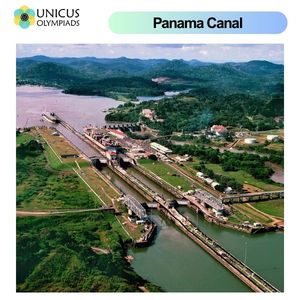

Global oil chokepoints are strategic narrow passages or routes in international waterways that are critical for the global supply of oil. These chokepoints are vital links in the maritime transportation of crude oil, refined products, and other energy resources. The smooth passage of oil through these chokepoints is essential for ensuring the stability of global energy markets and the functioning of the world economy. Any disruptions in these chokepoints, whether from geopolitical tensions, piracy, or natural disasters, can lead to significant price fluctuations, supply shortages, and economic instability. This article explores the concept of oil chokepoints, their global significance, and specific examples to highlight their role in international energy security.
Oil chokepoints are narrow, strategic maritime passages through which a significant portion of the world’s oil supply is transported. These chokepoints are typically located in regions where oil tankers must pass through to reach global markets. The importance of these chokepoints lies in their role as essential links in the global oil supply chain. Any disruption in these routes can have far-reaching consequences for oil prices, supply stability, and the geopolitical balance of power.
The defining feature of an oil chokepoint is its limited capacity or narrowness, meaning that only a specific number of ships can pass through at a time. These chokepoints often connect major oil-producing regions with major consumers, and they are typically located in areas of geopolitical or strategic importance. The smooth flow of oil through these passages is critical for global energy security.
Oil chokepoints play a significant role in global energy markets, and any disruption in their flow can have a ripple effect on economies worldwide. The transportation of oil through these chokepoints accounts for a substantial portion of global oil trade. In fact, approximately 30% of the world’s oil supply passes through just five major chokepoints, making them vital for the functioning of the global economy.
Oil chokepoints are critical to the stability of global oil prices. When oil supplies are disrupted due to blockages, conflicts, or natural disasters at key chokepoints, global oil prices can skyrocket due to supply shortages. Conversely, when these chokepoints are open and functioning smoothly, they help maintain a steady flow of oil, keeping prices stable. For instance, geopolitical tensions or military action in a chokepoint can lead to market panic, driving up oil prices.
The control or potential disruption of oil chokepoints can significantly impact geopolitical power dynamics. Countries that control or have influence over major chokepoints can exert significant influence on global energy markets and, in turn, on international politics. Oil-rich regions, such as the Middle East, are particularly sensitive to events that may affect these chokepoints. A country’s strategic position near an oil chokepoint can also affect its role in international alliances and conflicts.
Ensuring the secure and uninterrupted flow of oil through chokepoints is a key aspect of global energy security. Many countries, particularly those that are heavily dependent on imported oil, rely on these passages to meet their energy needs. Disruptions in oil supply due to chokepoint blockages can affect not only energy availability but also the broader economy, as industries, transportation, and production depend on a steady supply of energy resources.
Several key oil chokepoints around the world are central to the global energy supply chain. These chokepoints play a major role in facilitating the movement of crude oil from producers to consumers. Below are some of the most significant oil chokepoints:
The Strait of Hormuz is perhaps the most well-known and important oil chokepoint in the world. Located between Iran and Oman, it connects the Persian Gulf with the Gulf of Oman and the Arabian Sea. The Strait of Hormuz is a key passage for oil exports from the Middle East, with around 20% of the world’s oil supply passing through this narrow waterway.

The Suez Canal is a vital chokepoint that connects the Mediterranean Sea to the Red Sea, allowing ships to bypass the long route around Africa. The canal is especially important for oil shipments between the Middle East, Europe, and the Americas. In addition to oil, it is a crucial passage for liquefied natural gas (LNG) and other commodities.

The Strait of Malacca is a narrow stretch of water between the Malay Peninsula and the Indonesian island of Sumatra. It is one of the busiest shipping routes in the world, connecting the Indian Ocean to the Pacific Ocean. The Strait of Malacca is especially important for Southeast Asian and East Asian oil trade, as it provides the shortest route for oil tankers traveling from the Middle East to China, Japan, and other East Asian countries.

The Bosporus Strait, located in Turkey, connects the Black Sea to the Sea of Marmara, providing access to the Mediterranean. This chokepoint is crucial for the oil trade between Russia and Europe. While it is not as large a transit point as other chokepoints like the Strait of Hormuz or the Suez Canal, it still plays a significant role in transporting oil from the Caspian Sea region to Europe.

The Panama Canal, which connects the Atlantic and Pacific Oceans, is another important chokepoint for global oil trade. It is especially significant for shipments between the Americas, and its role in oil transport increased after the canal was widened to accommodate larger vessels in 2016. The Panama Canal helps facilitate oil trade between the U.S., Latin America, and Asia.

Oil chokepoints are strategically important not only for global energy supply but also for geopolitical stability. Control over or disruption of these chokepoints can have significant economic and political consequences. Countries with access to key chokepoints often wield considerable influence over global oil markets and international relations. This is why the security of these routes is a matter of great importance for both energy-consuming nations and oil-producing countries.
Many of the world’s oil chokepoints are located in politically unstable or conflict-prone regions, such as the Middle East and parts of Southeast Asia. Tensions in these areas can disrupt oil flows, driving up prices and potentially creating economic crises. Countries that control or have influence over these chokepoints often possess significant geopolitical leverage.
Piracy and security risks are a significant concern at some oil chokepoints, particularly in the Strait of Malacca and off the coast of Somalia. Piracy can disrupt oil shipments, delay deliveries, and increase costs for shipping companies. In some cases, oil tankers have been hijacked, further threatening global oil supply chains.